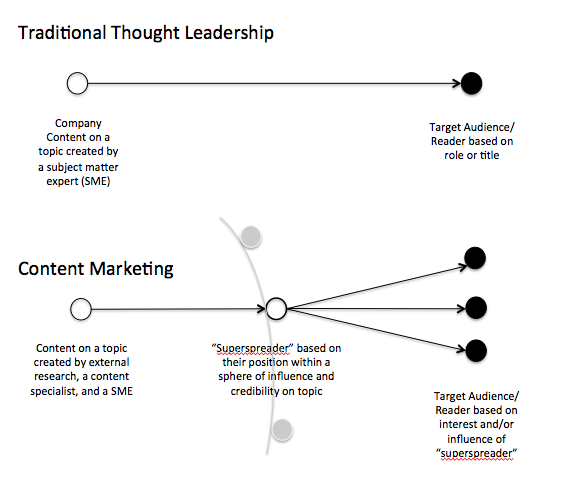Just in time for the cold and flu season, scientists have recently discovered that the “Pareto principle – the 80/20 rule” applies to infectious diseases. “Super Carriers” who represent 20% of the population, are responsible for transmitting 80% of infectious diseases.
 Superspreaders, like “Typhoid Mary” of the 1900’s, have the ability, although not fully understood, to infect others without falling ill themselves. Come in contact with the one of them, live in a densely populate area, and you’ve got the recipe for a massive outbreak.
Superspreaders, like “Typhoid Mary” of the 1900’s, have the ability, although not fully understood, to infect others without falling ill themselves. Come in contact with the one of them, live in a densely populate area, and you’ve got the recipe for a massive outbreak.
Like viruses, information is spread in similar ways. The importance of “links per node” in social network influence has been studied for years. Research has shown that it’s not the number of links, but rather how “strategically placed” people are in the core of the network, that leads to dissemination of information or disease through a large fraction of the population.
“Typhoid Mary” for example, was a cook in New York City and had an opportunity to infect large groups of patrons with typhoid fever breakfast, lunch and dinner. Readers of The Hot Zone, or Dan Brown’s Inferno, will also be familiar with the concept of geometric progression’s role in the spreading of disease.
Applying these same principals to the distribution of information yields some important insights for content marketers. Given the nuclear arms race going on in content creation and distribution, finding a way to get your message to, and consumed, by targeted audiences is becoming mission critical.
Superspreaders are a perfect route, and represent an opportunity to narrow your message. Think about it this way instead of trying engage 80-100% of your target audience (being everything to everyone) which is a sure fire way to get lost in the noise, you need only to appeal to the right 20%.
How do you find them? It begins with the mind shift of moving from quantity of contacts, to the quality of those contacts…their place in the network. If your organization is set on measuring social media by the number of fans, followers, etc. you’ve got your work cut out.
Find and profile the key influencers in your industry, and/or on a particular subject matter, and don’t solely rely on social media…you’ll end up with “false gods.” Ask the sales force, monitor speakers on industry events, search for authors on the topic, and scan the academic horizon. Once you’ve created your list, study their language.
Now, use your PR and social monitoring tools, as well as other sources, to understand how and what they communicate. Narrow in on those influencers who are in the right position to distribute your content to the right audience, and not those who may have the most followers and/or may be the most active. “Right position” may be related to position to audience, but it may also include, adding validity to your information.
In the digital world, the credibility of the content source is as important, if not more important than, as the actual author/content producer. In the past, companies aimed thought leadership campaigns directly at audience on topics they wanted to communicate. Success with content marketing depends on targeting key influencers with topics that resonate with them in their language so they will pass the information on to their followers.
As a result, you may want to score social spreaders (not a Klout score, use your own ranking) based on their influence (position + credibility). Set a goal for the year to get their attention through a mention or a share, just as you might do with targeted media. Tell your story by designing a content strategy based on the topic areas, language, and the interests of your superspreaders. Then let your “Typhoid Mary or Larry” spread your information…it’s called viral marketing for a reason!




